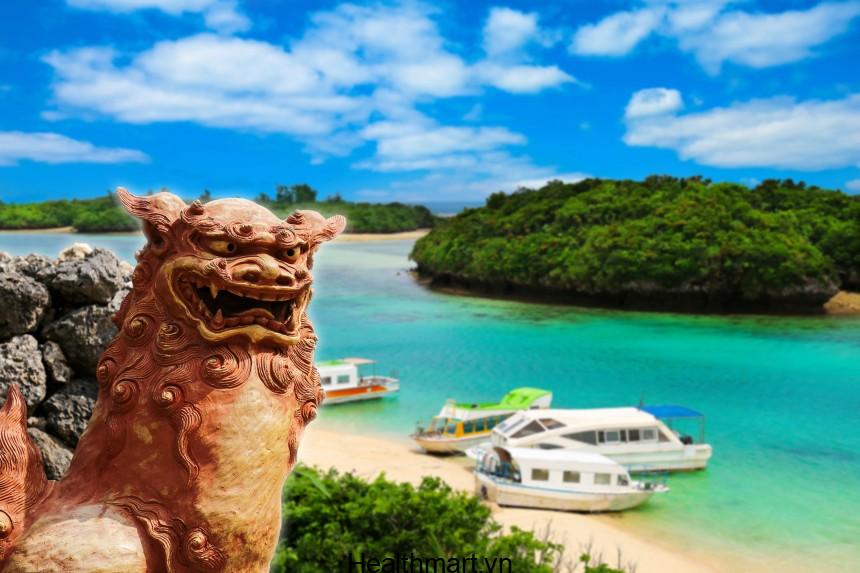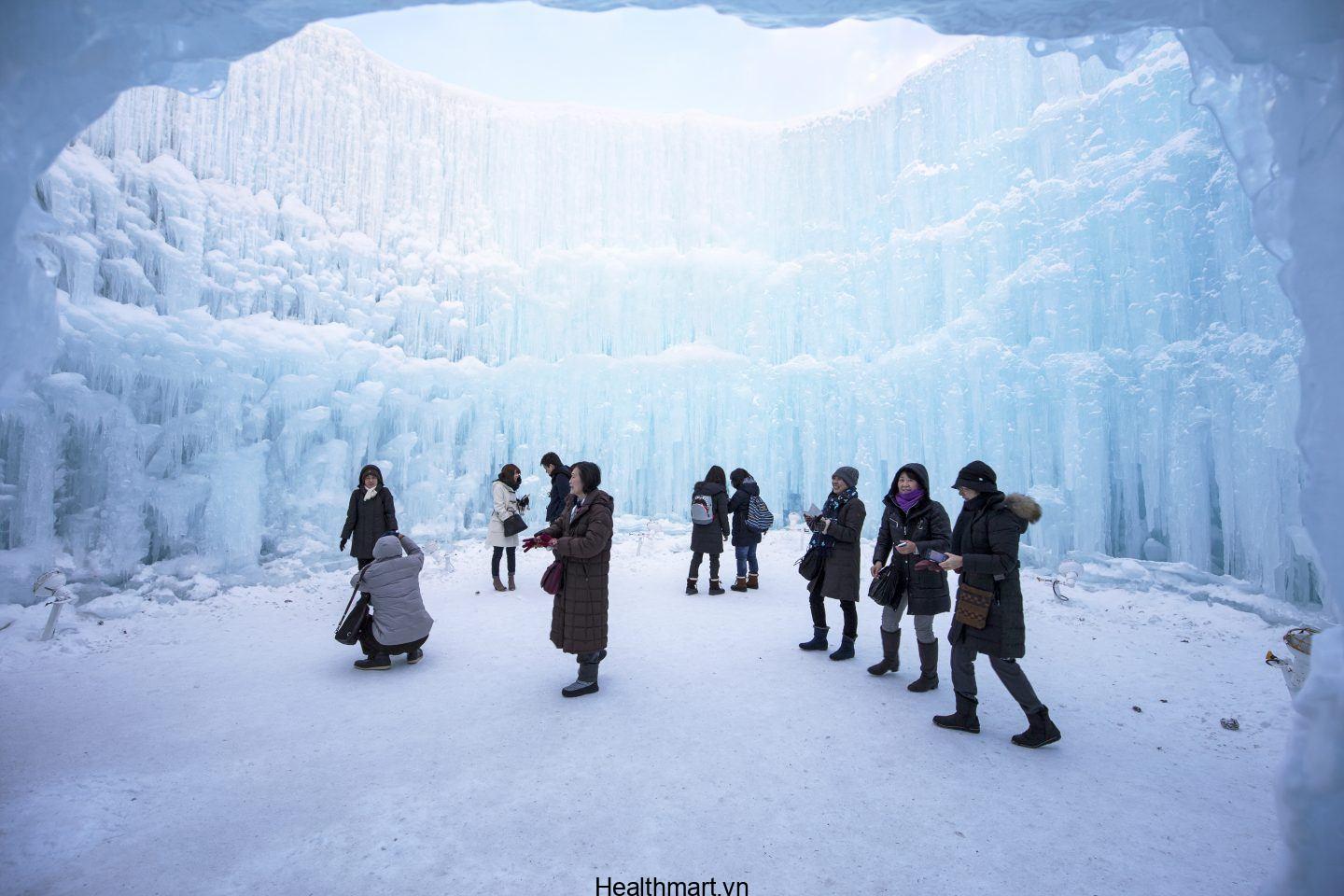No products in the cart.
En
What Is Okinawa, The 47th Prefecture In Japan, Very Cold?
What Is Okinawa, The 47th Prefecture In Japan, Very Cold?

Okinawa, the southernmost prefecture of Japan, is a captivating archipelago known for its turquoise waters, vibrant culture, and warm climate. Often referred to as the “Island Paradise,” Okinawa holds a unique position in the Japanese landscape, boasting its own distinct language, cuisine, and history. While it’s true that Okinawa is located in a tropical region, it’s not always as scorching as one might imagine. Let’s delve into what makes Okinawa such a unique prefecture and why it’s a popular destination for tourists and residents alike.

Okinawa’s Geography and Climate

Okinawa is an archipelago composed of 160 islands, with only 49 inhabited. The largest island, also called Okinawa, is home to the prefecture’s capital city, Naha. The archipelago is located in the East China Sea, approximately 600 kilometers south of mainland Japan.
- Location: Okinawa is situated between mainland Japan and Taiwan.
- Size: The total land area of Okinawa Prefecture is approximately 2,276 square kilometers.
- Climate: Okinawa has a subtropical climate, characterized by warm, humid summers and mild winters. The average temperature in Naha ranges from 16°C to 28°C.
- Rainfall: Okinawa experiences high rainfall, particularly during the typhoon season, which runs from May to October.
- Natural Beauty: Okinawa is renowned for its stunning beaches, coral reefs, and lush forests.
The Ryukyu Kingdom and Its Legacy
Okinawa boasts a rich history, once an independent kingdom known as the Ryukyu Kingdom. This kingdom flourished for centuries, establishing trade routes with China, Korea, and Southeast Asia. The Ryukyu Kingdom’s influence is evident in Okinawa’s culture, language, and traditions.
- Royal Lineage: The Ryukyu Kingdom was ruled by a succession of kings, with the last king abdicating in 1879.
- Unique Culture: Okinawa developed a distinct culture, influenced by its history of trade and interaction with neighboring countries.
- Architecture: The Ryukyu Kingdom’s influence is seen in the traditional architecture of Okinawa, particularly in the Shurijo Castle, a UNESCO World Heritage site.
- Arts and Crafts: Okinawa has a vibrant tradition of arts and crafts, including Ryukyu dance, Okinawan music, and textile weaving.
Okinawan Cuisine: A Blend of Flavors
Okinawan cuisine is a unique blend of Japanese and Southeast Asian influences, reflecting the island’s history. It’s known for its fresh ingredients, hearty dishes, and healthy options.
- Local Produce: Okinawa’s cuisine is heavily influenced by its local produce, including sweet potatoes, goya (bitter melon), and shima-tofu (Okinawan tofu).
- Seafood: Fresh seafood is a staple of Okinawan cuisine, with dishes like sashimi, sushi, and grilled fish being popular choices.
- Pork: Okinawan cuisine features a significant amount of pork, often used in stir-fries and stews.
- Traditional Dishes: Some notable traditional Okinawan dishes include Goya Champuru (a stir-fry with bitter melon), Okinawa Soba (a type of noodle soup), and Chanpuru (a dish combining vegetables, meat, and tofu).
The “Okinawa Diet” and its Health Benefits
The Okinawan diet has gained international attention for its potential health benefits, often associated with the “Okinawan Centenarians.” The diet is characterized by its emphasis on whole grains, vegetables, seafood, and moderate consumption of meat and sugar.
- Low Calorie Intake: The Okinawan diet is naturally low in calories due to its focus on fresh ingredients and traditional cooking methods.
- Rich in Antioxidants: The high intake of fruits and vegetables in the Okinawan diet provides a significant source of antioxidants, which are believed to protect against chronic diseases.
- Healthy Fats: The use of seafood and plant-based oils in the Okinawan diet contributes to a healthy intake of omega-3 fatty acids.
- Moderate Protein Intake: The Okinawan diet emphasizes a moderate intake of protein, primarily from seafood, tofu, and legumes.
Visiting Okinawa: A Paradise for Travelers
Okinawa is a popular tourist destination, attracting visitors from all over the world. The archipelago offers something for everyone, from pristine beaches to historic sites, vibrant nightlife to peaceful nature trails.
- Beaches: Okinawa boasts some of the most beautiful beaches in Japan, with crystal-clear waters and soft white sand.
- Diving and Snorkeling: The surrounding waters are teeming with marine life, making Okinawa a popular destination for scuba diving and snorkeling.
- Cultural Experiences: Visitors can immerse themselves in Okinawan culture by exploring the ancient Shurijo Castle, experiencing traditional Ryukyu dance, or sampling Okinawan cuisine.
- Nature and Outdoor Activities: Okinawa offers opportunities for hiking, biking, and kayaking.
Conclusion
Okinawa, the “Island Paradise” of Japan, is a unique and captivating prefecture. Its subtropical climate, rich history, vibrant culture, and delicious cuisine make it a popular destination for travelers and residents alike. While Okinawa is known for its warm temperatures, it’s worth remembering that the archipelago experiences a range of weather conditions, from the occasional cold snap to the occasional typhoon. Whether you’re seeking relaxation on pristine beaches, exploring historical sites, or experiencing the local culture, Okinawa offers a truly unforgettable travel experience.
Tags
- Okinawa Prefecture
- Ryukyu Kingdom
- Okinawan Cuisine
- Okinawan Diet
- Travel to Okinawa


Okinawa is actually the southernmost prefecture of Japan, and it’s known for its subtropical climate. It’s warm year-round, and there’s very little snow or frost.
I’m a little confused. This article says that Okinawa is the 47th prefecture in Japan, but I thought there were only 47 prefectures in Japan. Maybe I’m missing something.
This article is so poorly written. It’s full of grammatical errors and factual inaccuracies. I wouldn’t trust anything this author has to say.
This is a very interesting article! I never knew that Okinawa was so cold. I’m going to have to visit sometime soon.
I’m not sure what the author is trying to say. Okinawa is a beautiful place, and it’s definitely not cold.
I’m so glad someone finally wrote about this important topic! I’ve been saying for years that Okinawa is too cold.
I think it’s a joke, right? Like, a funny article about how Okinawa is always hot? I mean, come on, everyone knows that.
I’m sorry, but this article is completely wrong. Okinawa is known for its warm weather, not its cold weather. The author of this article should do some research before writing about a topic they don’t understand.
I think this article is trying to be funny. But it’s not very funny. It’s just confusing.
This article is very interesting. I never knew that Okinawa was so cold. I’m going to have to visit sometime soon.
I think this article is trying to be funny. But it’s not very funny. It’s just confusing.
I’m not sure what the author is trying to say. Okinawa is a beautiful place, and it’s definitely not cold. I think this article is trying to be funny, but it’s not very funny. It’s just confusing.
Okinawa is a beautiful place, and it’s definitely not cold. I think this article is trying to be funny, but it’s not very funny. It’s just confusing.
This article is very informative. I learned a lot about Okinawa, and I’m definitely going to visit sometime soon.